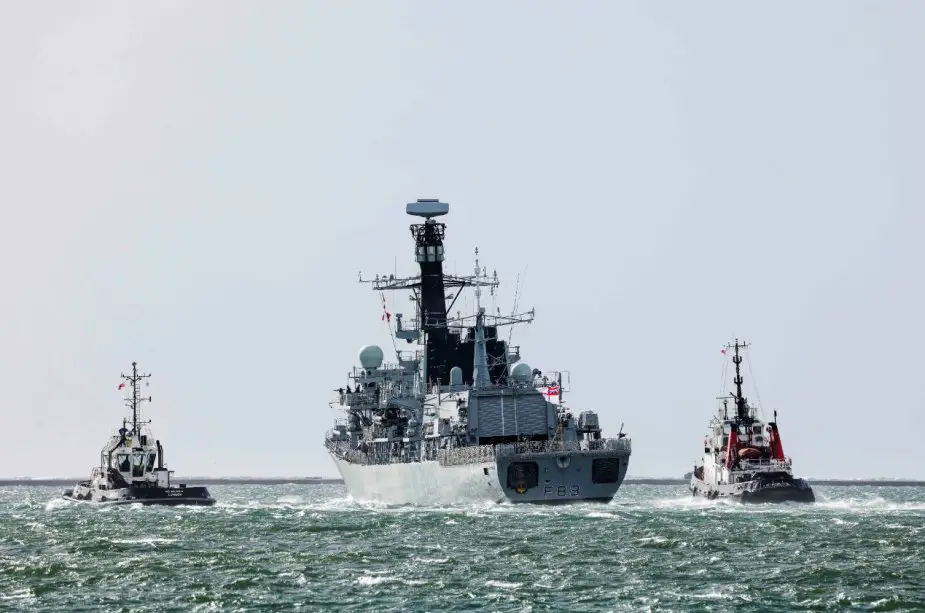According to a PR published by Babcock on April 25, 2024, the firm has secured the contract to oversee the entire maintenance and regeneration of the Type 23 frigates for the Royal Navy. This new role allows Babcock to manage all aspects of vessel upkeep from start to finish, streamlining the handover process to the ship’s crew.
Follow Navy Recognition on Google News at this link
 British Type 23 frigate HMS St Albans. (Picture source: Babcock)
British Type 23 frigate HMS St Albans. (Picture source: Babcock)
The shift in responsibilities comes after over five years of collaboration between the Royal Navy-led Refit Support Group and Babcock. This transition is set to optimize operational availability by freeing up Royal Navy personnel for frontline duties and introducing 40 new roles for engineering technicians and managers at Babcock's Devonport facility. These positions are dedicated to routine maintenance, resolving newly identified defects, and managing contracted upkeep projects.
Technicians from Babcock’s Type 23 Refit Support Group will collaborate closely with the company’s Upkeep project teams to ensure the vessels' systems are properly maintained and restored. This integrated approach has already yielded significant outcomes, notably with the HMS St Albans returning to sea three months ahead of its scheduled maintenance completion.
Type 23
The Type 23 frigates, also known as Duke-class frigates, are a class of warship that have been a cornerstone of the Royal Navy's surface fleet since the early 1990s. Originally designed for anti-submarine warfare in the North Atlantic, the capabilities of the Type 23 frigates have evolved significantly over the decades to include general purpose and specialized roles, encompassing anti-air, anti-surface, and anti-submarine operations.
The operational history of the Type 23s has been distinguished, with deployments around the world including patrols in the Persian Gulf, humanitarian missions, and maritime security operations. These frigates have been pivotal in the Royal Navy's efforts to maintain the security of the UK's international maritime interests and provide a versatile platform capable of a wide range of operations from warfighting to peacekeeping and disaster relief.
Technical data
Type 23 frigates are designed with a displacement of approximately 4,900 tons. These vessels measure 133.0 meters in length, with a beam of 16.1 meters and a draught of 7.3 meters. They are equipped with a Combined Diesel-electric And Gas (CODLAG) propulsion system.
This includes four Paxman Valenta 12CM diesel generators, each producing 1,510 kW of power, in the configurations that predate the Power Generation Machinery Upgrade (PGMU). Post-PGMU ships feature four MTU 12V4000 M53 diesel generators, each capable of 1,650 kW. Additionally, the propulsion system includes two GEC electric motors, each delivering 2,980 kW, and two Rolls-Royce Marine Spey SM1C gas turbines, each generating 19,500 kW.
These frigates achieve speeds exceeding 28 knots and have a range of 7,500 nautical miles when cruising at 15 knots. They can accommodate a standard complement of 185 personnel, with provisions for up to 205. Each ship also carries two Pacific 24 Rigid Inflatable Boats (RIBs)



